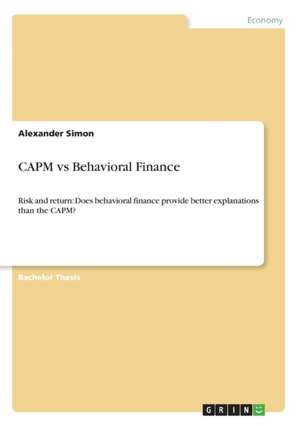Capm Vs Behavioral Finance
Autor Alexander Simonen Limba Engleză Paperback
Preț: 103.73 lei
Nou
Puncte Express: 156
Preț estimativ în valută:
19.85€ • 20.78$ • 16.52£
19.85€ • 20.78$ • 16.52£
Carte tipărită la comandă
Livrare economică 26 martie-01 aprilie
Preluare comenzi: 021 569.72.76
Specificații
ISBN-13: 9783656226833
ISBN-10: 3656226830
Pagini: 28
Dimensiuni: 148 x 210 x 2 mm
Greutate: 0.05 kg
ISBN-10: 3656226830
Pagini: 28
Dimensiuni: 148 x 210 x 2 mm
Greutate: 0.05 kg
